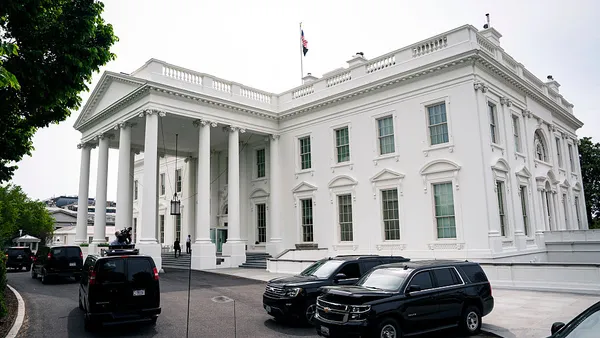Dive Brief:
- Some states are suddenly out hundreds of millions in emergency pandemic funds, as the U.S. Department of Education on Friday rescinded previously approved liquidation extensions for the spending.
- The abrupt decision, communicated to state education leaders via letter, caught states off guard, given that they are responsible for laying out money for the expenses before they can seek reimbursement from the Education Department.
- U.S. Secretary of Education Linda McMahon deemed the spending extensions for pandemic funds “not justified,” adding that “extending deadlines for COVID-related grants, which are in fact taxpayer funds, years after the COVID pandemic ended is not consistent with the Department’s priorities and thus not a worthwhile exercise of its discretion.”
Dive Insight:
The Education Department has not confirmed the total amount impacted by its latest move to roll back the approved liquidation extensions. But as of late February, about $4.4 billion of $201.3 billion — or about 2% — remained in unspent funds from the three federal relief allocations under the Elementary and Secondary School Emergency Relief fund approved by Congress.
At the same time, 41 states in addition to Washington, D.C., and Puerto Rico previously received extensions from the Education Department, giving them 14 extra months to spend ESSER funds awarded through the American Rescue Plan. While the regular spending deadline for ESSER-ARP was Jan. 28, the extensions gave districts until March 30, 2026, to spend down the funds aimed at alleviating the pandemic’s impacts on schools, including through academic interventions.
In Maryland, for example, up to $418 million is now in jeopardy, said Joshua Michael, president of the Maryland State Board of Education, during a Monday press conference. A majority of those funds — $305 million — have in fact already been spent but not yet reimbursed by the U.S. Department of Education, he said.
The Education Department’s decision to pull back spending extensions is “catastrophic,” said Carey Wright, Maryland’s state superintendent of schools, during the press conference.
“These funds have been spent or committed with every expectation of reimbursement,” Wright said. “The federal government must keep its word to students, educators and families.”
Under its formerly approved liquidation extension, Maryland has already spent an amount equal to 11% of the $3.2 billion in COVID relief funds distributed to the state with the expectation of being reimbursed, Wright said.
The state’s late liquidation requests were previously approved based on supply chain issues and construction delays, Wright said. Some of the state’s liquidated funds have been used for high-dosage tutoring, summer learning and social-emotional wellness programs.
Moving forward, the Education Department will “consider extensions on an individual project-specific basis where it can be demonstrated that funds are being used to directly mitigate the effects of COVID-19 on student learning,” said Madi Biedermann, the agency’s deputy assistant secretary for communications, in an emailed statement on Monday.
But states have already gone through an extensive process to justify to the Education Department that their expenditures need a liquidation extension, Michael said.
“And now we’re being asked to do it again and also being told we may not receive these funds,” Michael said. “This feels like the opposite of efficiency to me.”













